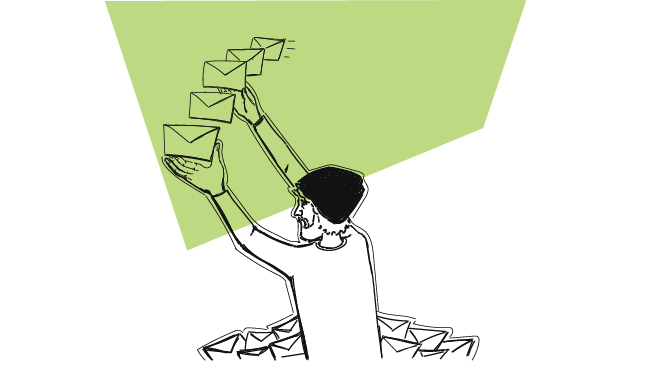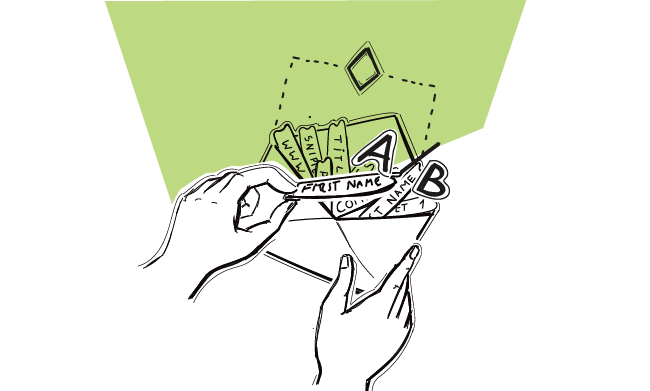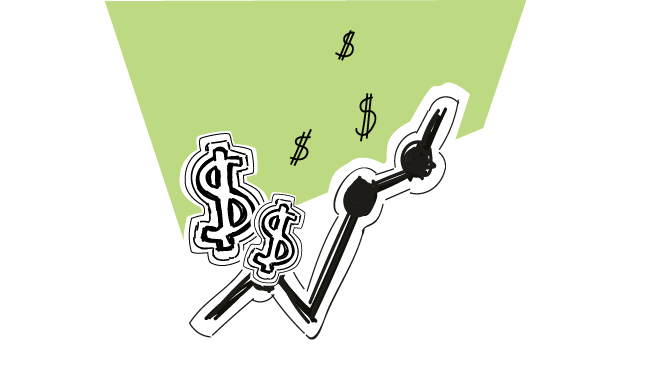Most of our attention on the Woodpecker blog is focused on cold emailing for lead generation because that’s what we do. However, email can be a great medium to stay in touch with those who are already customers and to generally promote customer engagement. Instead of thinking of email as a way to create potential customers, we should instead take a broader view to include customer retention and the entire customer journey.
More businesses are recognizing the importance of developing good customer relationships and email has a role to play. That’s why I asked Stewart from Fieldboom to share his thoughts on how to communicate with your customers via email and to build more productive customer engagement strategies.
Here’s what he had to say about using email to achieve better business outcomes.
The state of customer experience
We’re living in an age when consumer expectations have never been higher. We have the rise of ecommerce, “whether B2C or B2B ecommerce,” with its hyper-competitiveness and shrinking margins, to thank for customer engagement marketing, a focus on customer communication and the importance of the customer’s perspective.
Add the importance of social media channels and business success has never been more dependent on customer relationships.
While offering a superb product or service to your customers is still essential to the success of your company, you now also need to ensure your customers’ overall experience with your brand is top-notch as well. Customer loyalty extends well beyond what they buy to the overall experience of buying it.
Not only that but since we live in an ever-connected world, you also have to do everything you can to ensure your customers remain engaged with your brand – even when they aren’t actively using your services. An effective customer engagement strategy that lets you stay top-of-mind at all times is the ultimate goal.
In other words, rather than seeing the customer experience in terms of a finite transaction, you need to look at it as an ongoing – hopefully never-ending – relationship between your brand and your customers. These days, with a new customer touchpoint popping up with every new social media platform, any successful marketing strategy has to take this holistic approach to work.
According to Customer Experience Insight, the main ways to provide for your customers’ expectations on an ongoing basis are to:
- Personalize your service
- Provide choices to your customers
- Provide proactive service
- Be accessible
A recent article on helpdesk software from Helpscout pointed out that 75% of customers desire a consistent experience. Meeting these customer expectations is a must, especially in a world with so much online choice.
While there are a number of ways to go about doing all this, we’re going to focus specifically on using email to enhance your customers’ experiences with your brand.
The effectiveness of email in customer experience
Perhaps the main reason email is such an effective way of doing so is because it’s incredibly versatile. It can be easily adapted to any number of engagement campaigns to new and existing customers.
For one thing, email is the most effective channel for marketing. According to eMarketer, 81% of marketers view email as the best way to generate new customers. Similarly, 80% of marketers say email is the best way to retain customers. In terms of ROI, email marketing is tops as well, recovering an average of $44 for every $1 spent on campaigns.
Additionally, brands can (and should) utilize email to provide customer service and customer support. Case in point, customer service software company HelpScout goes as far as to say email is a “critical medium for online customer service.”
The bottom line is that successful customer engagement is more easily achieved when email is part of our customer engagement strategy. Let’s dive deeper into the ways email impacts and improves customer engagement.
Using email to enhance your customer experience
As we mentioned above, email can be used either proactively or reactively in order to fulfill your customers’ expectations – and then some.
Let’s take a deeper look at the many ways in which you can make this happen.
Personalize your email messages
Here’s a basic goal for every successful customer engagement marketing strategy that uses email — don’t send the exact same email to more than one person. It’s easy to do with today’s tools and all it takes is a little extra effort.
According to data collected by Marketing Land, personalized email marketing campaigns lead to:
- A 29% increase in open rate
- A 41% higher clickthrough rate
- A 600% growth in revenue
Now, personalizing your email content goes well beyond simply including the recipient’s name in the subject line and greeting (although this is important to do, as well). In order to truly personalize your email marketing campaigns, you have to collect, manage and use information about the people on your mailing list and use it to customize content accordingly.

While there are a number of ways you can gather this information, perhaps the most effective way to determine the type of content your audience wants is to simply ask them about their needs.
Creating surveys to be delivered to your new subscribers will not only allow you to immediately learn more about your customer base, but it will also show them that your goal is to begin providing ultra-relevant content to them as soon as you possibly can.
In conjunction with such surveys, you may also choose to utilize predictive analytics software to both collect and organize even more in-depth information about your mailing list subscribers (as in the example above). This will allow you to create highly specific audience segments – in turn enabling you to provide laser-focused content and offers to each of these segments.
Although email gives you the ability to contact every single one of your customers at once, creating such generic email campaigns typically does more harm than good. On the other hand, investing the necessary resources into personalizing your email campaigns as much as possible will almost certainly be worth the effort in the long run and increase customer engagement.
Provide options to your customers
Part of personalization is giving customers the power to choose how often they hear from you. This is a great way to maintain customer relationships and create a more comfortable situation for your target audience. Take a look at the following example from REI Co-Op:

(Source)
Immediately upon receiving a mailing list registration, REI sends the new subscriber an email asking them to provide more information about their interests. Rather than sending each subscriber the same kinds of content, REI ensures that the right content goes to the right person, right from the start.
Remember that your customers’ preferences evolve and will probably change from time to time. When this happens, there’s a good chance that customer will simply unsubscribe from your mailing list rather than make adjustments to their preferences.
To decrease the chances of this happening, you’ll want to reach out to your subscribers at various times throughout your relationship with them. This allows you to gather updated information regarding your customers’ needs and desires in the context of their interest in your brand.

(Source)
In the example above, Not On The High Street created an email to be sent to individuals who hadn’t engaged with the brand in a certain amount of time. These subscribers were given the option of changing their preferences regarding the type of content they received, as well as the frequency with which they received it.
(Yes, they were also given the option to unsubscribe completely – but only after all other options were exhausted).
While you definitely want to send such emails upon noticing that your customers’ engagement patterns have changed, you also want to do so when in-house changes occur, as well. For example, if you’ve recently updated or upgraded the services you provide, or you’ve recently released a new product line, you’ll want to inform your customers of such and ask if they’d like to sign up to receive additional information.
Again, the more you know about your customers, the better you’ll be able to determine how your brand fits into their overall lives. In turn, you’ll be in a great position to deliver exactly what they want from you, when they want it from you.
Customer engagement efforts like this are a great example of the kind of thinking that helps to create repeat customers and build long-term relationships.
Be proactive
Once a customer has provided you with their email address and given you permission to contact them, you should feel free to do so whenever doing so will enhance their overall experience with your brand.
(Note: The key part of that previous sentence is “whenever doing so will enhance their overall experience.” In other words, you definitely don’t want to bombard your customers with messages in their inbox; that will almost assuredly get you sent directly to their spam folders.)
Predictive analytics software is a valuable tool for determining the best course of action to take when emailing a specific customer or customer segment. Predictive analytics software analyzes the actions taken by an individual customer, as well as other customers that fit their overall persona, and identifies the optimum content or offer for you to send them (as well as when to send it).
For example, if a customer logs into their account on your site, then loads up their virtual shopping cart – but navigates away before they make a purchase – predictive analytics will assess the individual situation, and determine the best way to get the customer back on your website. This might mean providing the customer with an additional discount, suggesting additional products to add value to their potential purchase, or simply just reminding them that they never actually went through with the purchase in the first place.

You should view your customers’ overall experience with your brand not as a series of isolated events, but as a single journey with different customer experiences along the way. By proactively engaging with your customers via email at various moments throughout your relationship, you maximize the potential of your brand remaining at the top of their minds as they go about their daily routine and boost customer loyalty.
Be accessible and thorough
Email communication is a two-way street.
As much as you hope to actively engage with your customers from a marketing perspective, you also want to keep your email channel open in the event that your customers need to contact your support team.
According to a report by BenchmarkPortal, “People now expect the same level of service from online storefronts and service channels as they do from a visit to a retail store or a phone conversation with an agent.”
In other words, when a customer takes the time to reach out to you via email, you should essentially feel obligated to provide for their stated needs as best you possibly can. Ensuring customer success ensures your own success.
When it comes to providing customer service and support via email, there are two main factors to consider: timeliness, and thoroughness. For one thing, most customers expect to receive a reply from a representative of your company within 24-48 hours of their initial email.
Additionally, consumers in need of assistance typically expect their problem to be solved with a single reply from the company in question. Meeting this expectation is key to building brand loyalty and keeping track of customer behavior patterns.
But simply solving a customer’s problem is really the bare minimum you can do for them. Even if you manage to resolve the issue, you can still put customer relationships at risk if not handled properly.
So, in addition to resolving a customer’s issue or complaint via email, you also want to use this moment as an opportunity to provide them with even more value (which they may not have been expecting).
These days, forward-thinking companies get great value out of various customer service tools and software that are available to deliver delightful customer experience, which not only helps you solve their problems but helps you gain their trust and build an emotional connection.

(Source)
In the screenshot above, the customer states their wish to purchase a replacement grip for a golf club that had been discontinued by Calloway. Rather than dismissing the request and explaining that it was impossible, the company’s support team decided to simply send the customer a replacement absolutely free of charge.
So, while there was a chance the customer in question would have continued to do business with Calloway regardless of the outcome, here, it’s almost certain that this exchange will lead them to be a loyal Calloway customer for life.
Whether or not you’re actually able to solve a customer’s inquiry to their satisfaction, you still stand to gain some bonus points by asking them to provide feedback regarding their latest experience with your brand via email. It’s always worth reaching out to see how customers feel about various things.
Asking for feedback shows you actually care about the customer in question as a person, and that you want to continue providing for their needs. In other words, it shows that your obligation to them goes beyond simply solving a problem and moving on – you want to continue providing for them moving forward.
In cases where you weren’t able to help them, asking them for feedback shows that you’re not going to stop trying to help them even after your first attempt at doing so came up short. Even if an unsatisfied customer is intent on defecting from your brand, you can still email them an exit survey in order to determine areas in need of improvement for the future.
Wrapping up
Email is the most personal kind of communication we have and that’s why it’s so effective in customer engagement strategies. Nothing is even close to being as effective when it comes to successful customer engagement campaigns.
Email is a direct line of communication with every single one of your customers, no matter how large your audience may be. This opens the door to any number of customer engagement examples.
By investing the necessary time and energy into tailoring your email content, offers, and messages to your specific customers, you’ll all but ensure your followers get as much value as possible out of every message that reaches their inbox.
READ ALSO

How to Use Personalized Emails to Improve SaaS Customer Retention
If you're in a SaaS business as we are, you know that you need the right strategy to deal with churn. Etienne Garbugli from Highlights, new software that uses a subscription model, wrote a guest post for the Woodpecker blog. All about using email for customer retention.

5 Things Cold Email Outreach Can Change for Your Company
Are you skeptical of cold email outreach as a lead generation method? In today's blog post Anastasia Voytehina from CIENCE gives you a handful of good reasons why it can actually be a game-changer for your clients and your own company.

Expert RoundUp Vol. 1 – Conversational Marketing: Can it Boost Sales?
Lately, I've spent some time observing new trends in sales and marketing. I couldn't help but be drawn to "conversational marketing", a novel idea introduced by Drift, a platform that offers all-round solutions for staying in touch with customers and leads. The term itself seemed really interesting to me. After all, cold emailing is a form of starting a conversation, so if something like "conversational marketing" gets blog coverage, it's even better for cold emailing and similar technology that enables brands to stay in touch with their leads. So I popped into a chat with Mark Kilens from Drift who's worked extremely hard on Drift's Conversational Framework. I also reached out to lead generation experts and asked them to say a few words about the rise of chatbots and conversational marketing. Let's see what they had to say about it.
